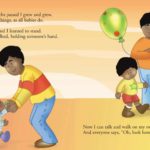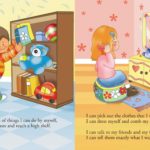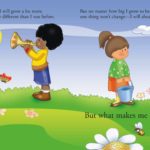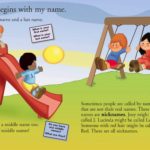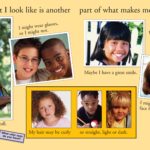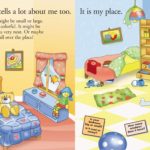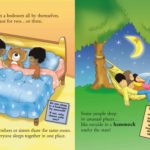Talking about myself
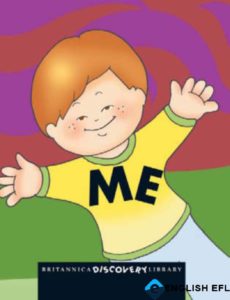
Helping Children Get the Most out of the Volume
By acknowledging and encouraging their efforts at self-expression and by listening nonjudgmentally to their feelings, adults play a critical role in building children’s self-awareness and self-esteem.
Similarly, try to notice and acknowledge the things that naturally interest them. Children are more eager to learn and learn much more when the content relates directly to them and their individual interests. The activities on the previous page will help your children discover their own likes and dislikes and understand more about themselves while they are engaged in creative play.
Who Are You? Tell the children that they are going to create a “picture” of themselves by showing things they like and don’t like. Give them the choice of either drawing the objects, finding pictures in old magazines, or collecting some objects that show their likes and dislikes. By joining in the activity and making your own “likes and dislikes” picture, you can give children a chance to see what’s expected of them while learning something about you too. Suggest or point out things that your children like and dislike, such as activities, foods, animals, and articles of clothing. When the projects are finished and the guesing part of the activity begins, you can add to the self-discovery by asking questions of the children, such as, “Why don’t you like that food?” and “Why is that your favorite animal?” Even if you know which are which, wait to ask such questions until the children have revealed the things on their pictures they like and don’t like.
Self-Portrait Sculpture. Children will have lots of fun while trying their hands at this tactile activity. Although this is an exercise in creating a “self-portrait,” your child’s imagination might result in a sculpture resembling just about anything! Let your watchwords be “anything goes” and let children know that there’s no “right” or “wrong” way to portray themselves. You might gently
guide younger children, or play a little guessing game with them, by asking questions about the sculpture, such as “where is your nose?” or “how many ears does your sculpture have?”
Feelings—Words and Pictures. This activity is valuable in getting a child to recognize and communicate his or her own feelings. When you “take dictation” from children, write down the words they say exactly as they speak them. This shows them that what they say is important. It also encourages greater interest in reading and writing because these are their words. Respond to children’s expressions of feeling with interest and openness rather than judging what they say, scolding, or showing other negative emotions. This conveys the message that their emotions matter and that it is fine to talk about them, both of which are essential building blocks in their learning to get along well with others.



